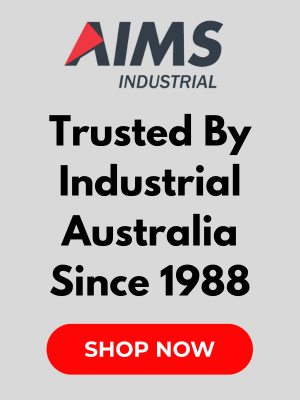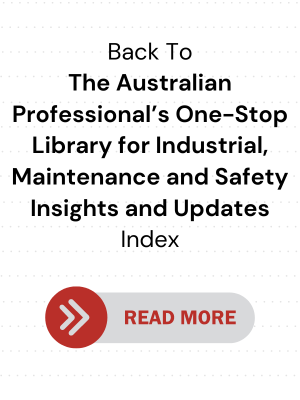5 Tips for Creating a Safe Workplace

.png)
Keeping your employees safe is the top priority for any business owner or manager, but it's not always easy.
Accidents can happen at any time and without warning, especially in high-risk industries such as manufacturing and construction, which is why it’s important to have strategies in place to protect your employees in case of an emergency.
Setting up the right insurance policy is a good place to start, as this allows you to support your workers’ recovery after an unexpected injury or incident while keeping your finances in line.
Arguably the best way to deal with unforeseen events like this is to prevent them from happening in the first place.
There are a number of steps you can take to minimise risks and reduce the likelihood of accidents in the workplace.
Here are five tips for creating a safe work environment for your employees.
In this article, we discuss how you can:
- Establish safety policies and evacuation procedures
- Equip your workplace with safety gear
- Train your employees in how to work safely
- Promote a culture of safety awareness
- Regularly inspect your workplace for potential hazards
Establish safety policies and evacuation procedures
Creating a clear, straightforward safety policy is crucial to promoting a safe work environment. Your safety policy should include a list of evacuation routes and designated meeting points, as well as instructions on how to use fire extinguishers and other emergency equipment. The policy should be regularly reviewed and updated as needed.
It’s also important to make sure that everyone in your building knows where the exits are located and how to reach them in the event of an emergency. It’s recommended that you hold regular fire drills so that everyone is familiar with the evacuation procedures.
Equip your workplace with safety gear
Working in a factory or other industrial setting comes with a certain amount of inherent risk. Whether it's operating heavy machinery, exposure to harmful chemicals, or simply being in close proximity to potential hazards, it's important to take steps to ensure the safety of your employees.
One of the best ways to do this is to make sure that your workplace is properly equipped with all the necessary safety gear. This includes things like protective clothing, safety glasses and hearing protection for employees who are working in areas where they might be exposed to potential hazards. It's also essential to have readily available first aid supplies in case of an accident.
At AIMS, it’s our mission to provide you with the resources you need to keep your machinery and team working smoothly, so you can count on us to deliver top-quality safety equipment to help you take care of your staff.
Train your employees in how to work safely
Another way to reduce workplace accidents is to provide employees with comprehensive training on how to safely perform their duties. This training should cover not only the specific procedures that need to be followed, but also the general principles of safe work practices. For example, employees should be taught how to identify potential hazards and how to avoid them. They should also be made aware of the importance of reporting any unsafe conditions or behaviours.
By educating employees in how to minimise risk, employers can create a safer work environment for everyone. In addition, regular safety training can ensure that employees are up to date on the latest safety procedures and regulations, which will also help you prevent injuries and manage emergencies.
Promote a culture of safety awareness
A culture of safety starts with each individual employee. It's important for employees to feel comfortable reporting any unsafe conditions or practices, no matter how minor they may seem. This can be accomplished by ensuring that there is an open line of communication between management and employees.
Regular safety meetings are also a great way to keep everyone up to date with new safety procedures and make sure that everyone is on the same page. By promoting a culture of safety awareness, you can create a workplace where everyone feels protected and supported.
Regularly inspect your workplace for potential hazards
A hazard can be defined as anything with the potential to cause harm. Common hazards in the workplace include trip hazards, electrical hazards, ergonomic hazards and more. It’s crucial to inspect the workplace regularly for potential hazards and correct them immediately.
Some hazards can be corrected easily, such as removing trip hazards or repairing electrical wiring. Other hazards may require more extensive measures, such as redesigning workstations to improve ergonomics. By taking proactive measures to identify and correct potential workplace hazards, you can create a safe and productive environment for your team.
By following these tips, you can reduce workplace incidents and promote a safe, productive and connected workplace.
Find out more about workplace health and safety regulations or browse our collection of safety equipment.
AIMS' Note on Buying PPE and Workwear
- Hazard assessment: Identify the specific hazards you will likely be facing in your work environment. Consider potential risks such as chemical exposure, falling objects, loud noises, electrical hazards or biohazards. This assessment will guide you in selecting the appropriate PPE for the job.
- Appropriate materials: Different materials offer various protective qualities. Consider flame-resistant (FR) materials for fire hazards, chemical-resistant fabrics for handling hazardous liquids and high-visibility options for work in low-light environments.
- Compliance to occupational safety standards: Opt for PPE that meets the pertinent Australia Standard (AS), although some brands -- especially imports -- will have other compliance markings such as ANSI, OSHA, ANSI, NIOSH, oSA etc. Look for certifications on the product label to ensure the equipment has undergone rigorous testing.
- Proper fit and comfort: Proper fit is crucial for both comfort, dexterity and protection. Ill-fitting clothing can snag on machinery or restrict movement, potentially creating additional hazards. Choose sizes that allow for layering in cold weather without being overly bulky and consider adjustable options for items like hard hats or respirators.
- Maintenance and replacement: Inspect PPE before each use for signs of wear, tear or damage. Follow (and factor in) the manufacturer's instructions for cleaning and storage. Some materials may require specialised laundering, while others can be machine-washed. Check for durability to ensure the clothing can withstand frequent use and cleaning. Replace damaged or expired PPE immediately to guarantee your safety.
- Training: Ensure you and any employees understand how to properly use, wear, adjust, maintain and store PPE and workwear. Improper use can negate its protective benefits.



.png)